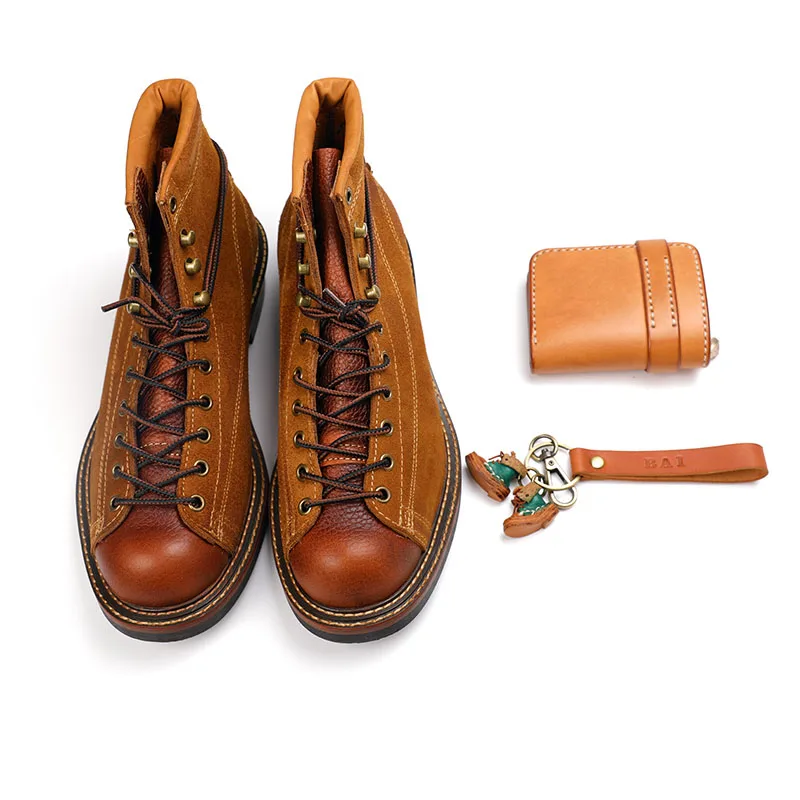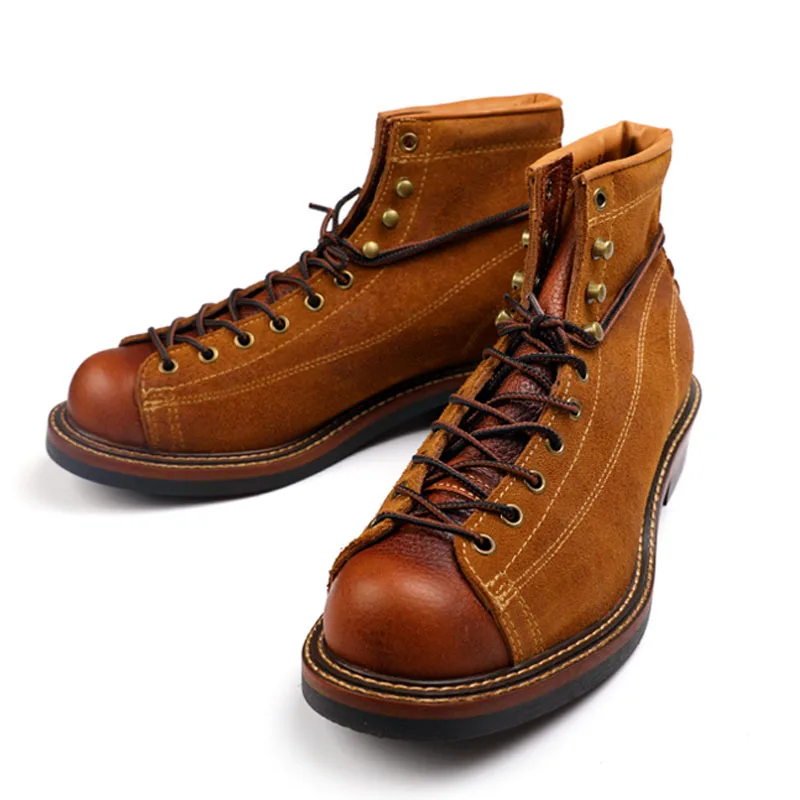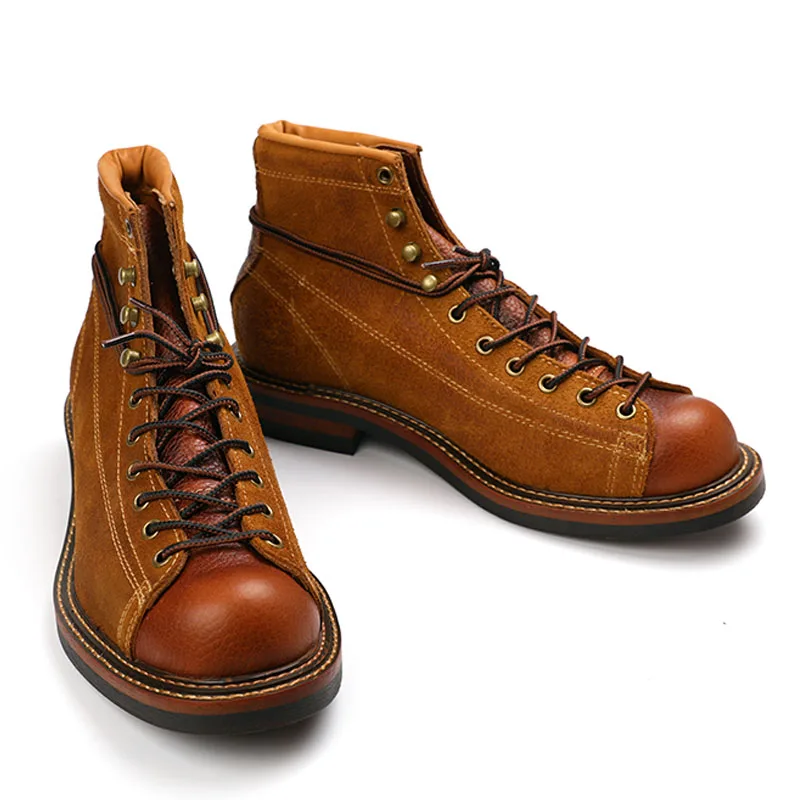History of Paratrooper Boots
Dropping from the sky demands specialized gear, and paratrooper boots stand out in this regard. With a rich history rooted in military operations, these boots have become a symbol of airborne troops’ fortitude.

Origins in Military Operations
The inception of paratrooper boots dates back to World War II. Designed for the 82nd and 101st Airborne Divisions, they served a critical role. They were to support soldiers as they descended from airplanes and engaged in combat. The early models featured reinforced soles and high laces. This provided ankle stability upon landing in rough terrains. The military recognized the need for sturdy footwear that would not only endure the impact of landing but also aid in combat readiness.
Evolution Over the Decades
Over time, paratrooper boots have seen significant advancements in their design and functionality. From their initial leather construction, they have evolved into incorporating advanced materials like nylon and kevlar. These enhancements serve to offer better protection and durability against harsh conditions. Modern versions also include improved cushioning and weather-resistant features. These allow paratroopers to operate effectively across various environments. From the jungles of Vietnam to the deserts of the Middle East, paratrooper boots have adapted to meet the demands of every mission profile they encounter.
Key Features of Paratrooper Boots
Paratrooper boots are built to withstand the rigors of aerial missions. Here are some of the key features that set them apart.
Material and Durability
Paratrooper boots are made with materials chosen for toughness and resilience. Leather is a common choice for its robustness and ability to mold to the wearer’s feet. However, modern developments have introduced nylon and kevlar. These materials add to the boots’ longevity and offer extra protection. The durability of these boots is paramount. They must sustain the wear and tear from harsh conditions, such as extreme weather and rough terrain.
Reinforced stitching and soles are also crucial features. They provide additional strength where it is needed most. These boots undergo rigorous testing to ensure they can survive jumps, sprints, and long marches.
Comfort and Fit for Aerial Activities
When it comes to comfort and fit, paratrooper boots are designed with the jumper’s needs in mind. Adequate padding is essential to cushion the impact of landings. The boots’ design includes ankle support to prevent injuries during jumps. This support is essential in preventing sprains and strains as soldiers maneuver upon touchdown.
The fit of the boot is also tailored for aerial activities. It’s snug to avoid shifting during the jump, but not too tight to cause discomfort. Boots often have adjustable laces or straps. These help to secure the fit, regardless of the paratrooper’s foot shape or size. Breathability is another critical aspect. It ensures comfort during long operations. A well-ventilated boot helps to manage sweat and reduces the chance of blisters and other foot ailments.

Importance in Modern Military Operations
Paratrooper boots are crucial in today’s defense strategies. Military operations often involve complex aerial maneuvers. These boots provide the needed performance edge. Paratroopers must have reliable gear to execute their missions successfully.
Enhancing Performance During Jumps
Boots designed for paratroopers improve jump performance in several ways. First, they offer stable footing. This is vital for a secure launch from aircraft. The specially crafted soles provide grip. This helps soldiers take off and land without slips. Second, the boots’ design reduces the risk of injury. Enhanced ankle support minimizes the impact on soldiers’ joints. Cushioning absorbs the shock of landing. These features help paratroopers stay agile and ready for action.
Safety and Protection Benefits
The protection values of paratrooper boots are immense. They shield the feet from harsh landings and rough terrain. A soldier’s feet are vulnerable during a jump. Yet, these boots provide a solid barrier. Soldiers are less likely to sustain common injuries. These include sprains, fractures, and cuts. With high laces and strong materials, the boots also prevent debris entry. This keeps the feet clear of obstructions that could impair performance or safety.
Comparing Paratrooper Boots with Standard Military Boots
Paratrooper boots stand apart from standard military footwear. They have unique features tailored for the skies.
Structural Differences
Paratrooper boots are distinct in design. They offer robust support compared to standard military boots. The high laces secure ankles, crucial for safe landings. They also have reinforced soles to endure tough impacts. Standard boots may lack these specialized elements. They focus more on general comfort and flexibility for ground operations.
Paratrooper boots might include advanced materials like kevlar or nylon. Standard boots often stick with tough yet flexible leather. These materials in paratrooper boots improve protection without sacrificing mobility.
Purpose and Functionality
The purpose of paratrooper boots extends beyond typical military duties. They ensure safety in high-altitude jumps and rapid ground maneuvering. Standard military boots, while durable, are not made for aerial activities. They provide basic protection and support on varied terrains.
Functionality-wise, paratrooper boots enable quick transitions from aerial descent to combat readiness. They have shock-absorbent features for landings and are designed to prevent injuries. Standard boots focus on long marches and carrying heavy gear over long distances.
Choosing the correct type of boot is essential. Soldiers must match their specific mission requirements. Paratrooper boots are for those in the skies, while standard military boots serve on the ground.
Maintenance and Care for Paratrooper Boots
Proper maintenance is vital for the durability and performance of paratrooper boots. This section will outline effective strategies for keeping your boots in prime condition.

Cleaning Practices
To ensure your paratrooper boots last, routine cleaning is essential. Remove dirt and debris after each use with a soft brush or damp cloth. For deeper cleaning, use a saddle soap or a cleaner designed for leather. Always dry your boots naturally, avoiding direct heat sources which can damage the material. Condition the leather periodically to maintain its flexibility and prevent cracks.
Longevity Tips
Beyond regular cleaning, there are other ways to extend the life of your boots. Store them in a cool, dry place away from direct sunlight. Use cedar shoe trees to maintain the shape and absorb moisture. Rotate your boots if possible, giving them time to air out between uses. Avoid wearing the same pair every day to reduce wear and tear. Regularly check for signs of wear, especially on the soles and seams, and address repairs promptly to avoid further damage.
Choosing the Right Paratrooper Boots
Selecting the right paratrooper boots is critical for safety and performance. The factors and brands outlined below help ensure the best choice.
Factors to Consider When Purchasing
When buying paratrooper boots, consider several key aspects:
- Material and Build Quality: Look for high-quality materials like leather, nylon, or kevlar. These provide durability and protection.
- Fit and Comfort: Ensure the boots fit well and offer adequate ankle support. Check for cushioning that aids in landing impact.
- Sole Design: The soles should offer excellent grip and shock absorption. This is crucial for safe landings and quick maneuvers.
- Breathability: Good ventilation is important, especially in different climates. It helps prevent moisture buildup and foot ailments.
- Durability: Choose boots known for their longevity. They should withstand tough conditions and frequent usage.
Top Brands Recommended by Experts
Several brands stand out in the production of high-quality paratrooper boots:
- Bates: Known for their robust construction and reliability.
- Danner: Offers innovative designs with superior comfort features.
- Belleville: Renowned for durable materials and excellent foot protection.
- Rocky: Provides boots with outstanding traction and ankle support.
Consulting with experienced paratroopers and checking online reviews can also guide your decision. Proper research ensures the purchase of boots suited for your specific needs.